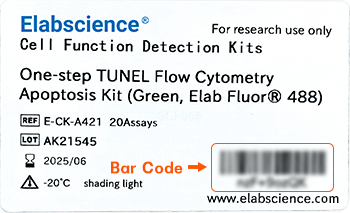NRG1 Polyclonal Antibody (E-AB-16491)

For research use only.
| Verified Samples |
Verified Samples in WB: Mouse brain, A172 Verified Samples in IHC: Human colon cancer |
| Dilution | WB 1:500-1:2000, IHC 1:50-1:200 |
| Isotype | IgG |
| Host | Rabbit |
| Reactivity | Human, Mouse |
| Applications | WB, IHC |
| Clonality | Polyclonal |
| Immunogen | Synthetic peptide of human NRG1 |
| Abbre | NRG1 |
| Synonyms | ARIA, Acetylcholine receptor-inducing activity, Breast cancer cell differentiation factor p45, CHICK, ERBB2 p185-activator), GGF, GGF2, Glial growth factor, HGL, HRG, HRG1, HRGA, Heregulin, MST1, alpha (45kD, heregulin, homolog of |
| Swissprot | |
| Calculated MW | 70 kDa |
| Cellular Localization | Secreted, Cell membrane, Does not seem to be active, Membrane, May possess an internal uncleaved signal sequence, Nucleus, May be nuclear and Secreted, Has a signal peptide. |
| Concentration | 0.6 mg/mL |
| Buffer | Phosphate buffered solution, pH 7.4, containing 0.05% stabilizer and 50% glycerol. |
| Purification Method | Affinity purification |
| Research Areas | Cancer, Neuroscience, Signal transduction |
| Conjugation | Unconjugated |
| Storage | Store at -20°C Valid for 12 months. Avoid freeze / thaw cycles. |
| Shipping | The product is shipped with ice pack,upon receipt,store it immediately at the temperature recommended. |
| background | The protein encoded by this gene was originally identified as a 44-kD glycoprotein that interacts with the NEU/ERBB2 receptor tyrosine kinase to increase its phosphorylation on tyrosine residues. This protein is a signaling protein that mediates cell-cell interactions and plays critical roles in the growth and development of multiple organ systems. It is known that an extraordinary variety of different isoforms are produced from this gene through alternative promoter usage and splicing. These isoforms are tissue-specifically expressed and differ significantly in their structure, and thereby these isoforms are classified into types I, II, III, IV, V and VI. The gene dysregulation has been linked to diseases such as cancer, schizophrenia and bipolar disorder (BPD). |
Other Clones
{{antibodyDetailsPage.numTotal}} Results
-
{{item.title}}
Citations ({{item.publications_count}}) Manual MSDS
Cat.No.:{{item.cat}}
{{index}} {{goods_show_value}}
Other Formats
{{formatDetailsPage.numTotal}} Results
Unconjugated
-
{{item.title}}
Citations ({{item.publications_count}}) Manual MSDS
Cat.No.:{{item.cat}}
{{index}} {{goods_show_value}}
-
IF:{{item.impact}}
Journal:{{item.journal}} ({{item.year}})
DOI:{{item.doi}}Reactivity:{{item.species}}
Sample Type:{{item.organization}}
-
Q{{(FAQpage.currentPage - 1)*pageSize+index+1}}:{{item.name}}





